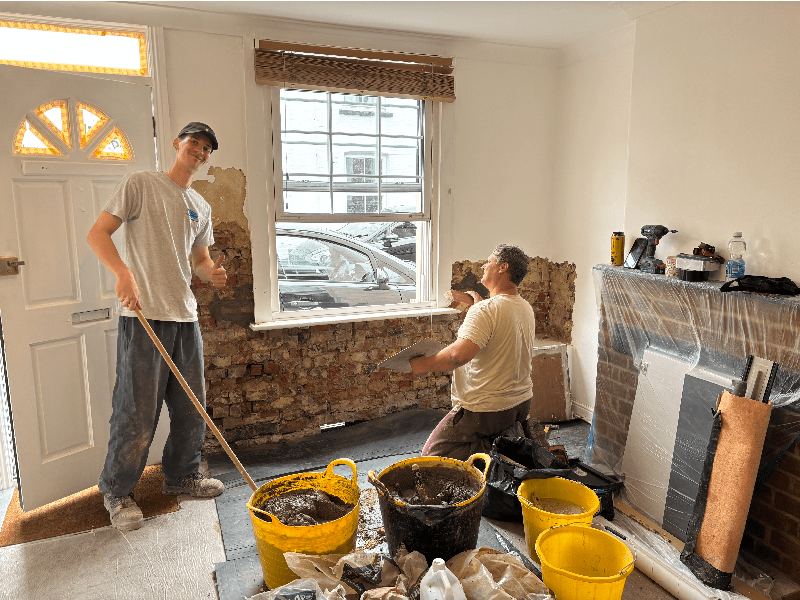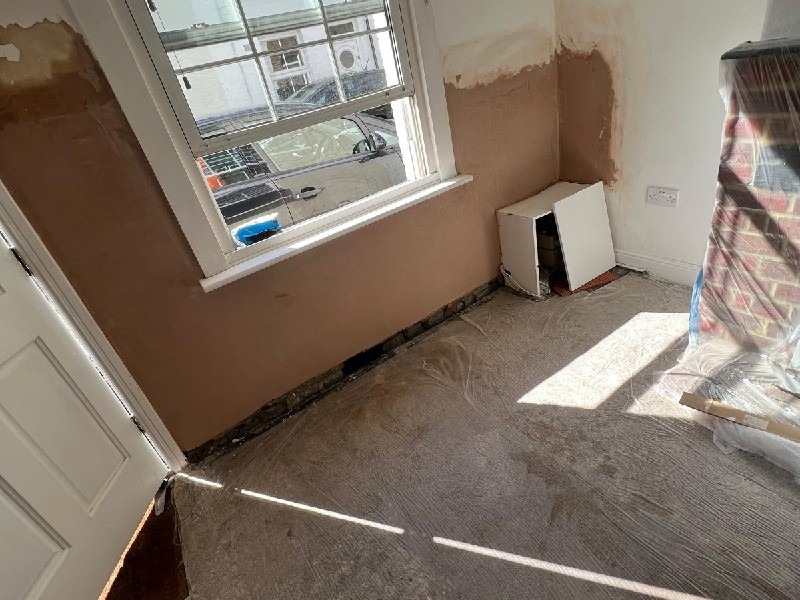Rising Damp in Old Moulsham
During the inspection, clear signs of moisture were identified on two external walls, with damp patches visible up to around one metre high at the front and rear of the living space. A separate area of damp was also noted at the top of the rear wall. Moisture readings taken during the survey showed levels peaking at approximately 100% WME near the base of the walls, dropping below 20% WME at one metre high, which is consistent with rising damp. Elevated moisture levels at the top of the rear wall indicated a separate source of water ingress, likely caused by a leak at a rear gutter joint, where staining was also observed.

Our survey confirmed that the property was affected by several defects, including rising damp caused by a failed damp-proof course, and lateral rainwater penetration resulting from a faulty gutter joint. After our report and recommendations were reviewed, we secured the contract for remedial work. This case study covers the project from survey to completion, detailing diagnostics, treatment, and restoration.

The remedial work commenced on 9 September 2025 and was scheduled to take three days. The first stage of the project involved removing and setting aside the skirting boards before carefully hacking off and disposing of the affected plaster up to a height of 1.3 metres. This allowed access to the masonry for the next phase of treatment.
